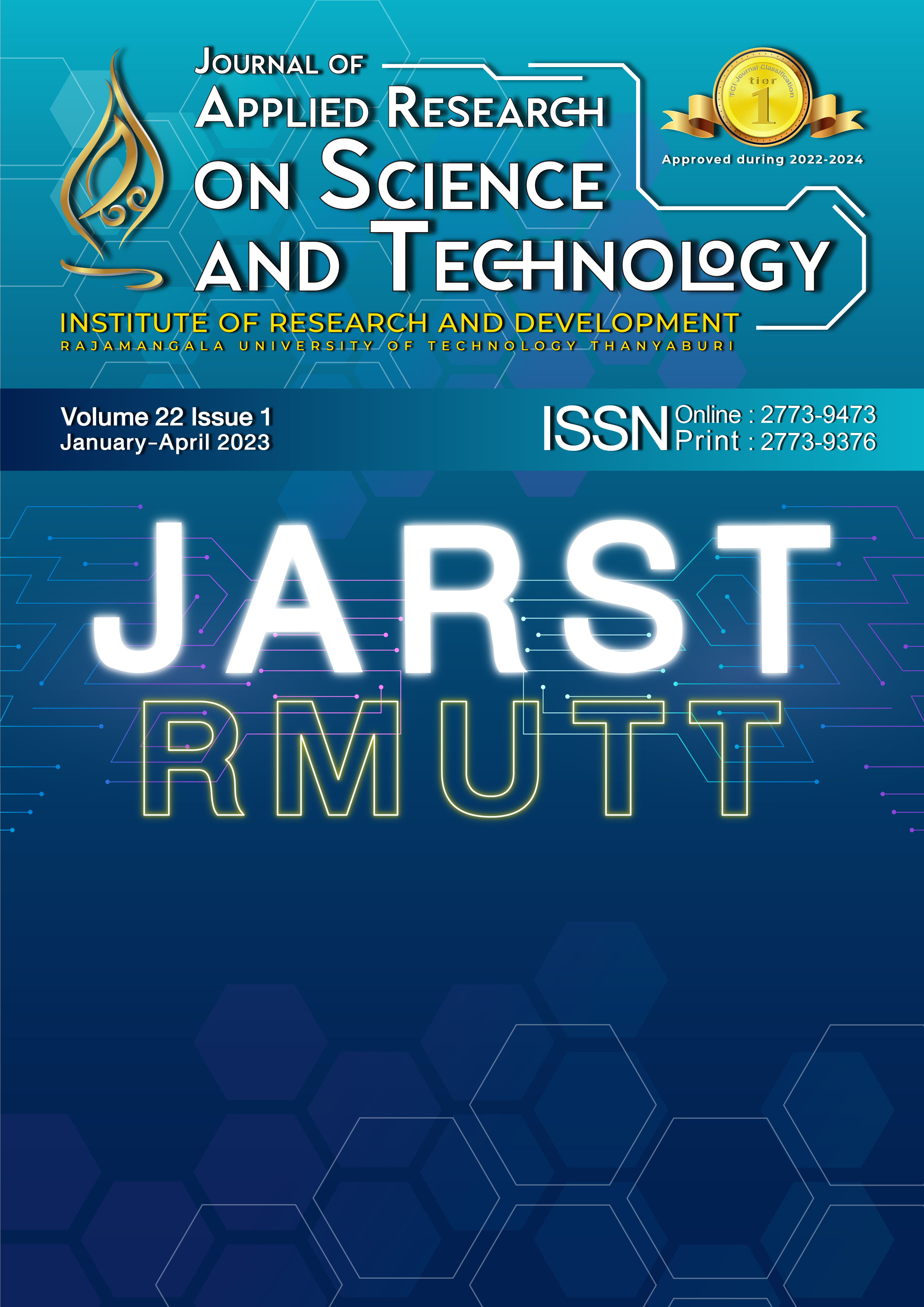The Development of Bodysuit for Body Balance in Children with Spastic Diplegia Cerebral Palsy
Main Article Content
Abstract
This study aimed to design a bodysuit for body balance in children with spastic diplegia cerebral palsy and evaluate the effectiveness of the products. Studying product usage needs through in-depth interviews with specialist kyphosis and round shoulder would meet their needs. The result of the physical study of eleven spastic diplegia cerebral palsy children with hypertonia and GMFCS at 1-4 levels were applied to design the bodysuit for body balance that increases the stability of upper bodies, reduces the tilt of the body, and improves kyphosis and round shoulders. The data from the body size study of the sampling were applied to develop the prototype of the bodysuit for body balance for children with cerebral palsy in six standard sizes. Three different stretch fabrics with different pressure and elasticity were used in the different areas of the bodysuit. The evaluation of effectiveness of the product prototype was evaluated by expert physical therapists and revealed that a sample of children with cerebral palsy had no change in the sitting posture score and had increased reach in some directions. However, the samples had qualitative changes in posture while sitting. The body is upright, and they had a better spine elongation. The products can reduce kyphosis and the round shoulder of the samples. However, they cannot reduce the lateral tilt because the weight of the hips on both sides is unequal and still see the instability of the sitting position in the forward bending direction in some of the samples. The result of the satisfaction test of prototypes after wearing the product for 4 weeks through the caregiver of children with spastic diplegia cerebral palsy, showed relatively high scores in function, physiology and aesthetic aspects.
Article Details

This work is licensed under a Creative Commons Attribution-NonCommercial-NoDerivatives 4.0 International License.
References
Rajanukul Institute. Cerebral Palsy [Internet]. 2557 [cited 2016 Apr 20]. Availability from: http://rajanukul.go.th/new/index.php?mode=academic&group=269&id=3231&date_start=&date_end.
Theratogs. Trunk- spine -posture Full body system [Internet]. 2022 [cited 2022 Sep 20].Availabilityfrom:https://theratogs.com/product/full-body-system/.
Second Skin. Splints & Neurological [Internet]. 2022 [cited 2022 Sep 20] Availability from:https://www.secondskin.com.au/products/splintsneurological.
Rebeca DE, Barros Rs. Use of suit therapy in Cerebral Palsy rehabilitation: a literature review. Journal of Society for development in new net environment in B&H. 2015;9(1):483-9.
MacKenzie C, McIlwain S. Evidence – Based Management of Postural Control in a Child with Cerebral Palsy. Physioth Can. 2015;67(3):245-7.
Leung WY, Yuen DW, Ng SP, Shi SQ. Pressure prediction model for compression garment design. J Burn Care Res. 2010;31(5):716-27.
Fuengfoo A, Tuntariyanond P, Yasasindhu W, Khumlee N. The efficacy of lycra garments in children with cerebral palsy at queen sirikit national institute of child health. JCMPHR. 2021;2(1):1-9.
The Thai Red Cross Rehabilitation Center. Cerebral Palsy [Internet]. [cited 2023 Feb 03]. Available from: https://shorturl.asia/RPb8z.
Bax M, Goldstein M, Rosenbaum P, Leviton A, Paneth N, Dan B, et al. Proposed definition and classification of cerebral palsy. DMCN. 2005;47(8):571-6.
Palisano R, Rosenbaum P, Bartlett D, Livingston M. GMFCS – E & R gross motor function classification system expanded and revised. DMCN. 1997;39:214-23.
Pavão SL, Barbosa KA, Sato Tde O, Rocha NA. Functional balance and gross motor function in children with cerebral palsy. Res Dev Disabil. 2014;35(10):2278-83.
OT DUDE. Balance Grades for Occupational & Physical Therapy (Normal, Good, Fair, Poor Scale) [Internet]. [updated 2019 Sep 30; [cited 2023 Feb 1]. Availability from: https://citly.me/VUfWo.
Bartlett D, Birmingham T. Validity and Reliability of a Pediatric Reach Test. Pediatr Phys Ther. 2003;15(2):84-92.
Orzada BT, Kallal MJ. FEA Consumer Needs Model: 25 Years Later. Cloth Text Res J. 2019;39(1).:24-38.
Tuntariyanond P, Fuengfoo A, Kumphai P, Tooptompong P, Setthayanond J, Duangpanya T. Textile and Product Innovation for Children with Cerebral Palsy in Thailand. National Research Council of Thailand (NRCT); 2017.
Romeo DM, Specchia A, Sini F, Bompard S, Polito DA, Vecchio AD, et al. Effects of Lycra suits in children with cerebral palsy. Eur J Paediatr Neuro. 2018;22(5):831-6.
Ruangkasa S, Vichuwanich W. A Study of Physiological Structure and Element Composition of Fibers at Burial with Different pH Values. J Appl Res Sci [Internet]. 2021 [cited 2022 Nov 5];20(2):12-24. Available from: https://ph01.tci-thaijo.org/index.php/rmutt-journal/article/view/240971.


